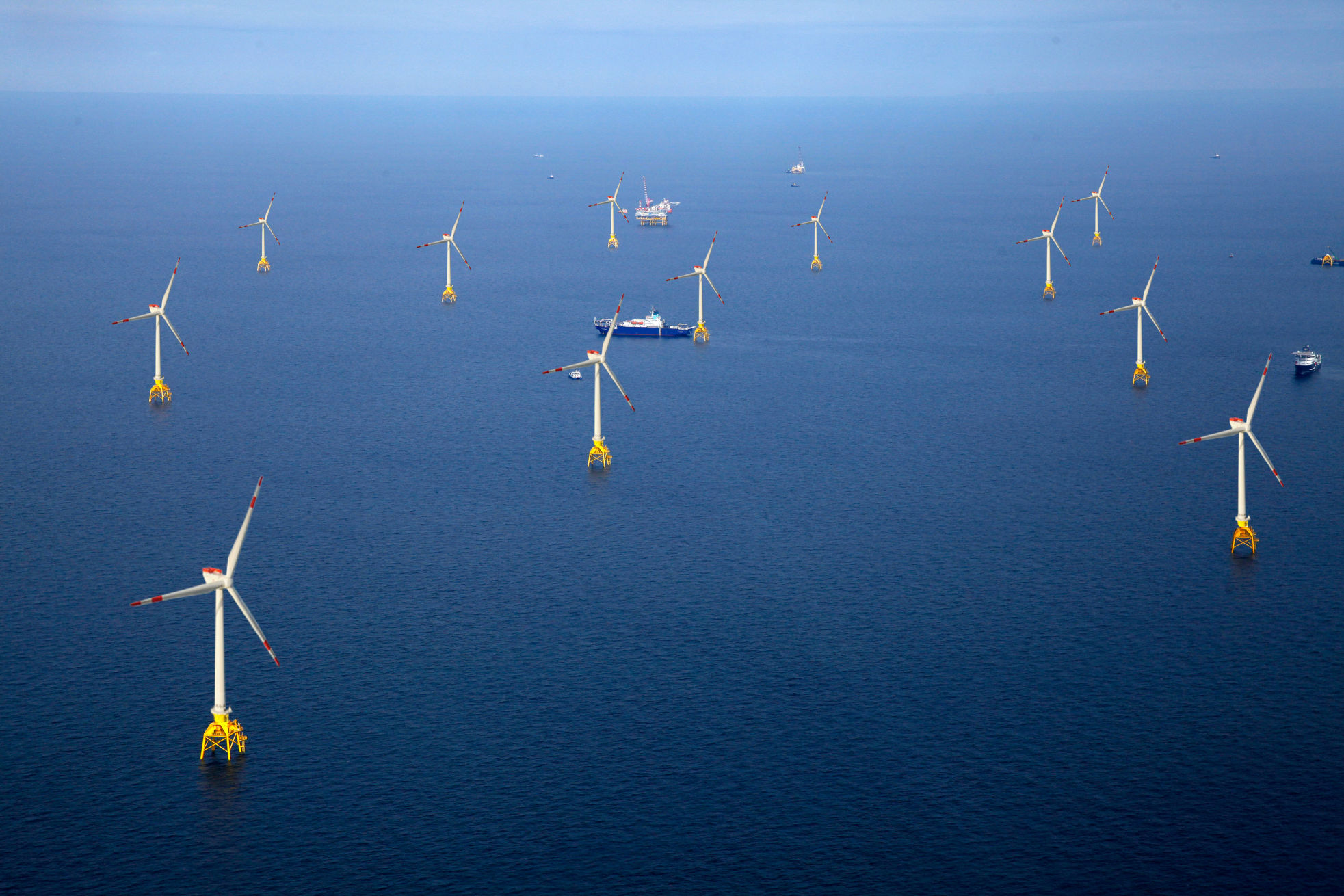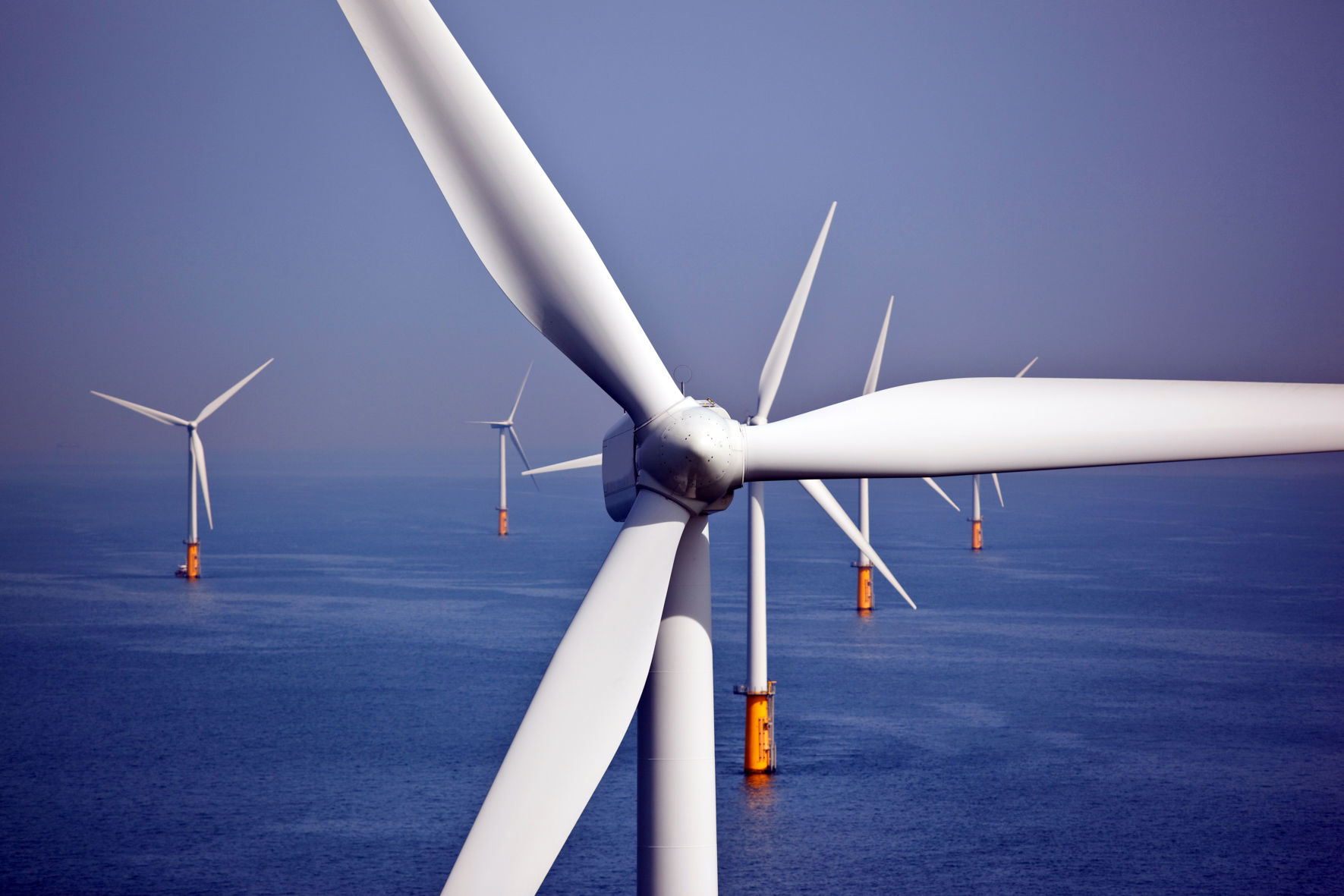- Products and Solutions

Offshore Wind Energy
Offshore wind energy, generated offshore, offers greater production capacity due to intense winds. Neoenergia is studying its expansion, promoting sustainability.
Offshore wind energy is energy that comes from the winds that blow on the high seas. It is in this place, on the seabed, that the parks that transform wind into electricity are installed.
Neoenergia is developing studies for the viability of offshore wind generation with a view to expanding its renewable portfolio, thus reinforcing its commitment to decarbonization, innovation and the development of renewable technologies.
The difference compared to onshore parks is in the generation capacity and the size of the wind turbines. In Brazil, this energy is seen as a bet for the energy transition, taking advantage of the extensive coastline and diversifying the energy matrix
Advantages of offshore wind

Construction of an offshore wind farm
Offshore wind turbines can be installed on a fixed foundation or a floating platform. The difference is that the second model reaches greater depths, with higher wind potential as well. For the construction, in both cases, prior studies are necessary to document the compatibility of the project with the maritime space in question.
This is because the park must be away from areas of ecological interest, marine traffic and strategic naval facilities. In addition to the fact that it does not emit pollutants into the atmosphere while its generators are in action, all these factors make offshore wind energy environmentally friendly.
What is the difference between onshore wind farms and offshore wind farms?
For offshore installations, wind turbines may be larger than those installed onshore, due to the ease of maritime transport, which has fewer load limitations compared to land.

Offshore wind energy in Brazil
Another aspect in favor of the productive capacity of offshore parks: according to industry authorities, the model is the main bet for Brazil to consolidate its energy transition, with more innovation, generation of opportunities and the promotion of clean sources.
There are more than 8 thousand kilometers of coastline in the country, favoring the production of offshore wind energy. Diversifying energy production, especially with green sources and taking advantage of the potential of the national territory, keeps Brazil constantly
News
2026-01-14
Instituto Neoenergia destina mais de R$ 27 milhões em leis de incentivo para projetos sociais em 2025
2026-01-13
Neoenergia energiza último trecho da linha de transmissão Alto Paranaíba
2025-12-22
Neoenergia abre inscrições para sua primeira turma da Escola de Operadores do Centro de Operações Integradas
2025-12-19
Novo filme da Neoenergia sobre Natal reforça presença da marca com clientes
2025-12-12